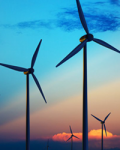-
Philippines economy struggling to recover from COVID, typhoons
MANILA -- GDP in the Philippines declined by 8.3% y/y in Q4, translating into a full-year 2020 contraction of 9.5%. ANZ Bank says that, once again, the weakness was attributable to weak household consumption and investment which could not be offset by Government spending.
The bank says the Philipppines' growth trajectory this year is contingent on fast and full fiscal delivery. "Although there is limited efficacy to further monetary easing, the Bangko Sentral ng Pilipinas will likely reduce policy rate in Q1 to support growth, in our view," it says.
Full year domestic demand, an outcome of social distancing policies and the attendant strain on contact intensive industries, contracted by 12.4% in 2020.
"Q4 GDP expanded sequentially by 5.6% (seasonally-adjusted), slower than 8.0% in Q3. Apart from the usual COVID-19 related factors, the spate of typhoons hitting the Philippine archipelago also dampened the recovery."
ANZ says private investment in the Philippines registered its largest annual decline, shaving 7.8% from GDP growth. The other major contributor to the decline in GDP was persistently weak household consumption, which fell 7.2% y/y in Q4.
Although Government consumption increased by 4.4% y/y, its contribution remained muted (0.5%). "Its impact would have been more pronounced if revised spending targets had been met. Aided by weak imports, net exports boosted Q4 GDP growth by 4.4%. Overall, final domestic demand in the Philippines slid 11.1% y/y, only slightly better than 15.3% contraction in Q3.
ANZ says the growth outlook for 2021 remains challenging. Mobility restrictions, albeit less restrictive than before, are still in place. The labour market is still weak, with the unemployment rate at 8.7% in Q4. Real time indicators have also been softening after a brief uptick in December last year on back of the holiday season.
www.live.anz.xom (ATI).





